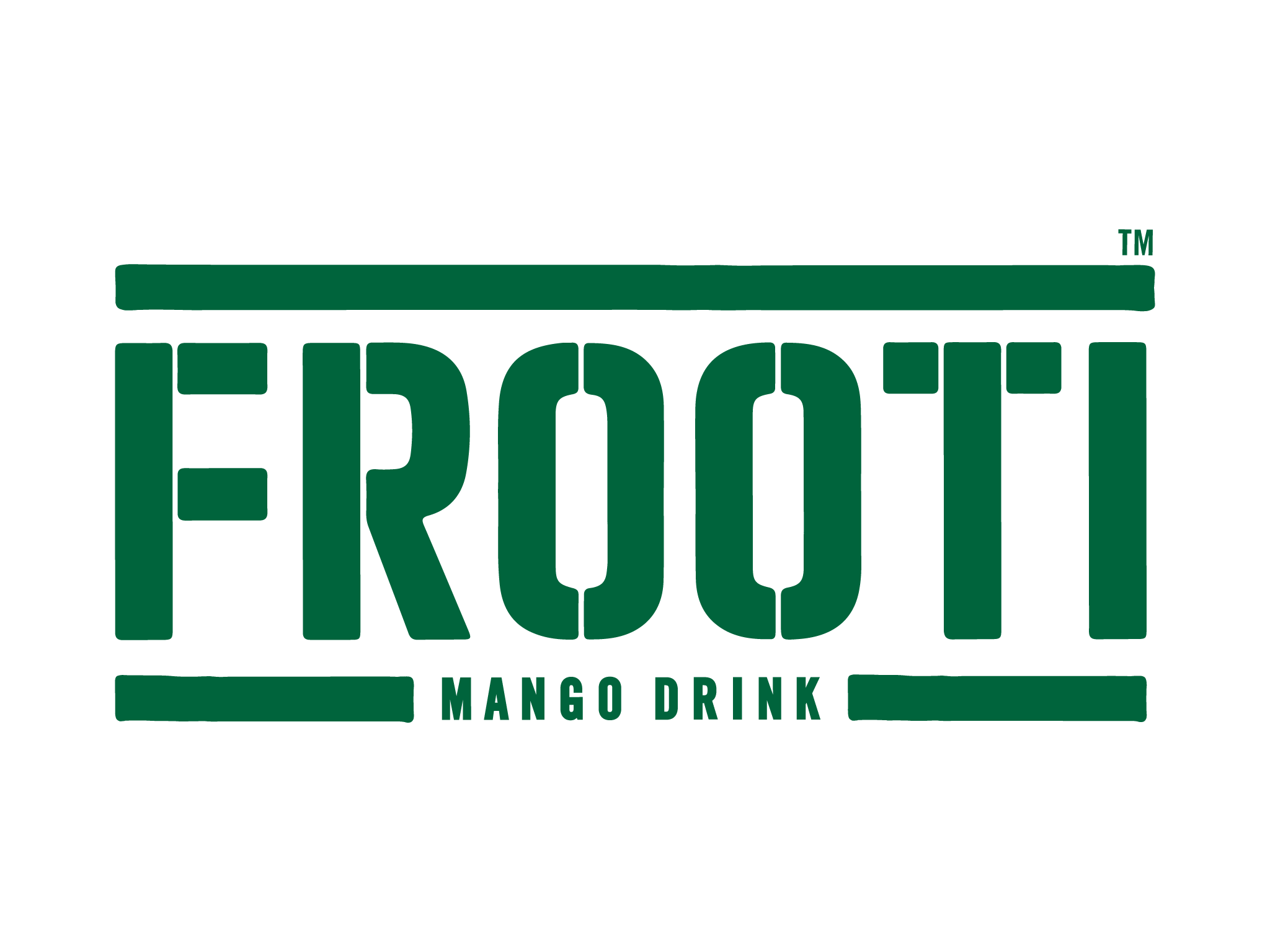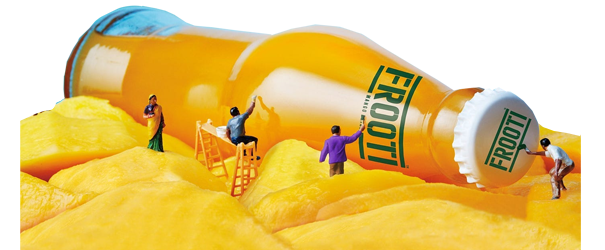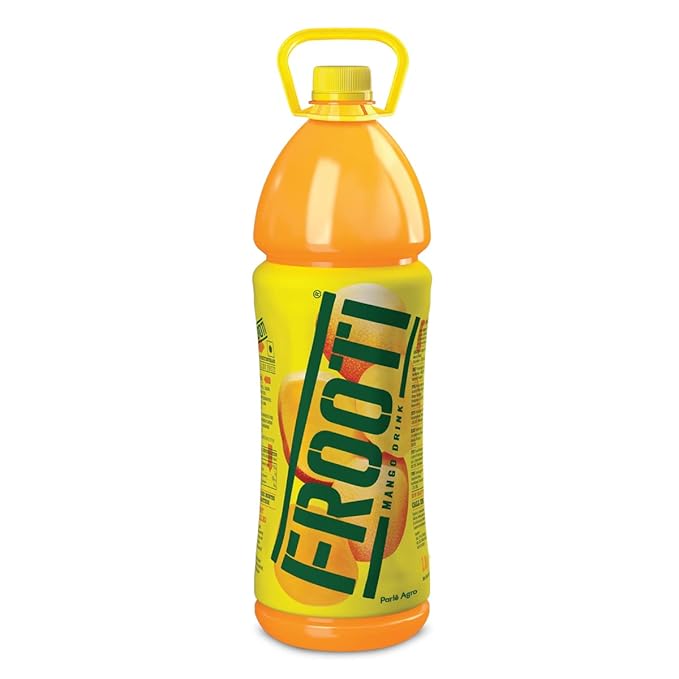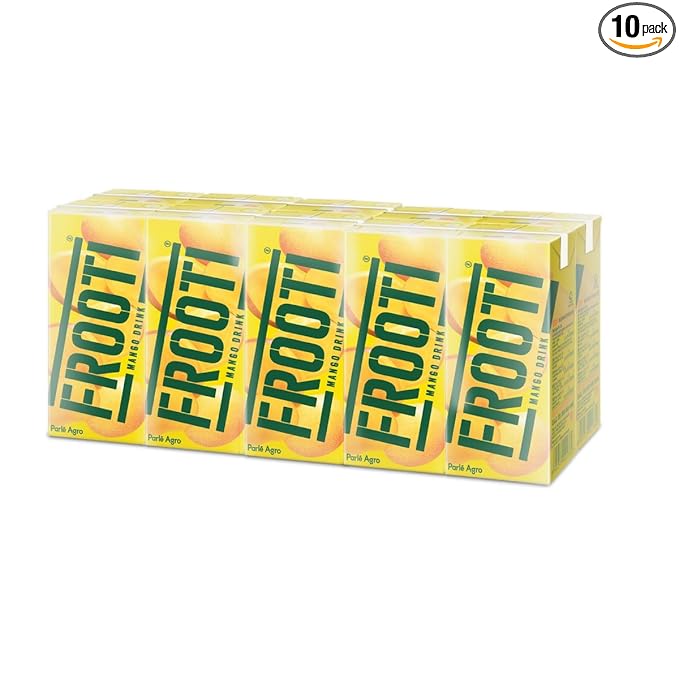Brand Overview
Brand:
Frooti
Parent Company:
Parle Agro Pvt. Ltd.
Core Categories:
Beverages
Taglines Over the Years:
- Mango Frooti, Fresh and Juicy
- Sip Sip Frooti
- Frooti - The Original Mango Drink
Market Context at Launch
India in the Mid-1980s
- RTD (ready-to-drink) beverages were nascent; syrups and fresh fruit juices dominated home consumption.
- Mango was the undisputed “king of fruits,” but year-round freshness and convenience were lacking.
- Organized FMCG players were eyeing packaged fruit drinks as urban lifestyles evolved.
- Parle Agro, already successful with mineral water (Bisleri) and snacks, spotted a void for a pure mango concentrate drink.
- Aimed to offer consistent taste, year-round availability, and hygienic packaging.
Marketing Mix (4Ps)
Product Strategy
Core Proposition
- 100% real mango pulp (Alphonso concentrate), water, sugar, and permitted stabilizers—no artificial flavors.
- Positioned as a healthy, fruit-first refreshment.
- Tetra Pak cartons (200 ml, 500 ml, 1 L): first in India to use aseptic multi-layer packaging for juice drinks.
- Made Frooti portable, shelf-stable, and preservative-free at ambient temperatures.
- Frooti Bubbles: Mango-flavored carbonated drink.
- Frooti Welch's: Grape drink under license (short-lived).
- Frooti Tetra Fun Packs: Small sachets for children's lunchboxes.
- Frooti Ice Candy and Frooti Slush: Frozen dessert adaptations.
Pricing Strategy
- Mass-market pricing to undercut imported and local orchard juices.
- Retailed at ₹5–₹10 for single-serve packs initially, later ₹20–₹40 for larger cartons.
- Maintained high affordability even as raw-mango pulp costs fluctuated.
Promotion Strategy
Brand Positioning
- “Mango Frooti, Fresh and Juicy”—emphasis on real mango pulp vs. synthetic-flavor competitors.
- “Sip Sip Frooti”—a playful, memorable radio and TV jingle that became cultural shorthand.
- 1985 Launch Ads: Showcased children and youth enjoying Frooti at picnics and school trips, highlighting convenience.
- “Sip Sip Frooti” Jingle (late 1980s–2000s): Ubiquitous across TV, radio, and outdoor; built top-of-mind awareness.
- Celebrity Endorsements: Shah Rukh Khan (2003–2006) and Alia Bhatt (2017–present) to connect with youth.
- Digital & Social: #FrootiSelfie, interactive AR filters, and campus activations.
Distribution Strategy
- Leveraged Parle's vast rural and urban network—kiranas, modern retail, tea stalls, cinema halls.
- First mover in school tuck shops through small “fun packs.”
- Strong presence in seasonal stalls (mango festivals, cricket matches, fairs).
- Expanded to export markets in the Middle East, Africa, and the U.S. (NRIs).
Competitive Landscape
Early Competitors
- Local fresh-juice vendors, syrups (e.g., Rooh Afza).
Later Rivals
- Maaza (Coca-Cola), Rasna (concentrate powder), Minute Maid (Coca-Cola), Real (Dabur).
Frooti's Edge
- First-mover advantage in aseptic mango drinks.
- Consistent pulp quality from trusted Alphonso sources.
- Iconic jingle and packaging that became category shorthand.
- Ongoing SKU innovation without losing core ADN.
Consumer Connection
- Childhood nostalgia: first juice in school tiffins, summer holidays, birthday parties.
- Health halo: communicated “real fruit” and no preservatives.
- Youth affinity: playful branding, catchy jingle, youthful ambassadors.
Challenges & Strategic Responses
Challenges
- Fluctuating mango harvests and raw-material costs.
- Entry of deep-pocketed global rivals (Coca-Cola's Maaza, Dabur's Real).
- Rise of health-conscious consumers seeking low-sugar or natural options.
- Backward integration: Partnerships with mango growers in Ratnagiri and Devgad for stable supply.
- Price promotions and bundling with Parle snacks to protect share.
- Low-sugar and no-added-sugar variants development.
- Enhanced digital storytelling on provenance and farmer welfare.
Current Position (as of 2025)
- Market Share: ~30–35% of India's packaged mango drink category.
- Reach: 3 million+ outlets nationwide, strong rural penetration.
- Revenue: Estimated ₹1,500 crore+ annual sales.
- Brand Health: High top-of-mind recall; “Sip Sip” remains a popular tune.
- Innovation Pipeline: Exploring functional drinks (mango + immunity boosters) and RTD tea-duo packs.
Key Learnings
- First-mover advantage, when backed by quality and distribution, can create enduring category leadership.
- Iconic branding (jingle + mascot packaging) builds emotional equity that outlasts ad cycles.
- Supply-chain partnerships are critical in an agro-based product to manage seasonality and costs.
- Continuous, relevant extensions (fun packs, low-sugar variants) keep the brand fresh without diluting core promise.
Summary
Frooti's India journey is a case study in category creation, taste-led innovation, and memorable branding. By harnessing real mango pulp, pioneering aseptic packaging, and embedding itself in childhood memories, Frooti transformed from a niche experiment into India's quintessential mango drink—one “Sip Sip” at a time.












